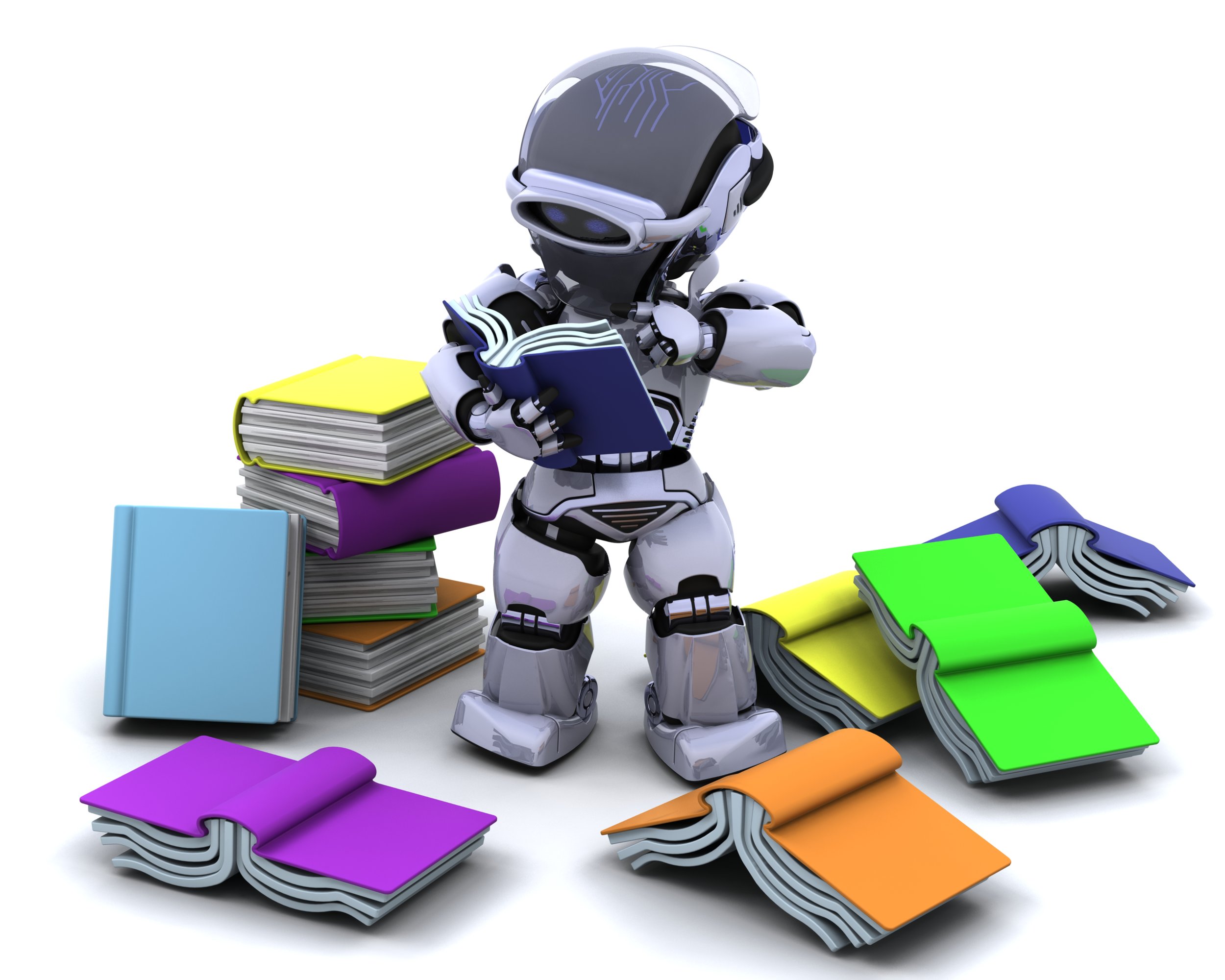Robots or Readers?
By Mark W.F. Condon, Unite for Literacy vice president
Have you ever had a computer or phone read something to you from the screen?
This is a trick question. No, you have not.
Nobody else has either. That’s because, even if it sounds like someone reading, it’s not reading. It’s the robotic output of language-like noise. This reading-like message might more accurately be referred to as saying the text. Capable readers make personal sense of text given the context or circumstances in which it is read. It’s understanding that makes reading valuable. Merely saying words lacks any truly lasting value.
This distinction is important.
When learning phonics, kids learn to say individual words. Those who master phonics may seem able to read and the resulting saying can certainly impress family members and garner positive attention from phonics tutors. However, when adults react to such simple saying events as if they were reading events, we can create potentially damaging confusion for kids about what reading really is.
We can imply that reading can sound mechanical, lacking human expression that conveys personal importance and our humanity.
When new readers practice phonics by “sounding out” words they do not know and adults call that activity reading, children can lose sight of the entire point of the language in books: joyful or otherwise emotionally fulfilling reading, which can lead to a lifetime of avid reading and ever fresh learning. So, saying a sentence or paragraph of text from technical articles or complex stories without adding the emotions needed for making personal sense of it should never be called reading. To be perfectly clear with children and each other, adults should only call it reading when it includes efforts to use text to advance understanding of the author’s ideas and mental images. If we are just sounding things out, we should call that activity what it is— SAYING. That’s accurate and unambiguous.
Reading is social, with the potential to impact each of us personally. Reading aloud, whether to ourselves or others, may sound like just saying the author’s words. But done right, it also includes all the dynamics of fluent human speech defined below: stress, pitch, juncture, facial expressions and gestures. Consider how each adds layers of meaning to a grandpa’s read aloud of the classic tale, The Three Little Pigs.
Stress: using volume—from loudness to softness—to emphasize certain syllables or words that enhance meaning, even when just in our heads.
Pitch: varying our voices from high to deep tones to enliven an unfolding dialogue, story, or idea.
Listen as Grandpa uses both stress and pitch as he reads, conveying qualities of the characters by simply changing his voice.
He starts with a low, growling voice for the wolf. “The wolf calls, ‘Little pig, little pig, let me come in.’”
Then, Grandpa switches to a high, trembly tiny voice as he reads the nervous little pig’s response. ‘“Not by the hair of my chinny chin chin,’ said the first little pig.”
Now, using the text’s punctuation to guide him in imagining how the author or storyteller might have said it aloud, Grandpa incorporates juncture, using pauses and in this case, slowing down the reading in places to enhance the story.
“...then I’ll huff.... and I’ll puff... and I’ll blooowwwww your house down!” called the wolf.
And add to these elements Grandpa’s use of facial expressions (the wolf’s furious face, the terror on the pig’s face), body movements and gestures (the wolf leaning forward—fist waving, the pig cowering and trembling), and the story comes to life! His grandchildren listen with rapt attention as Grandpa punctuates the language with dramatic flair.
Little ones love lively read alouds that incorporate these elements. Even toddlers can be overheard mimicking volume, character voices, and creating drama through thoughtful pauses and dramatic gestures. And regardless of whether their renditions vary in meaning from a mature reader’s, they convey the personal essence of their books through animated readings and facial expressions.
It’s vibrant, memorable experiences like this that convey to young learners that reading—whether for themselves or for others, is far more than a merely rapid, or otherwise accurate, robotic SAYing of print. Rather, using text and the dynamics of human speech and dramatic performance, kids will come to appreciate the thrill of rich sense-making for themselves and their audiences.
